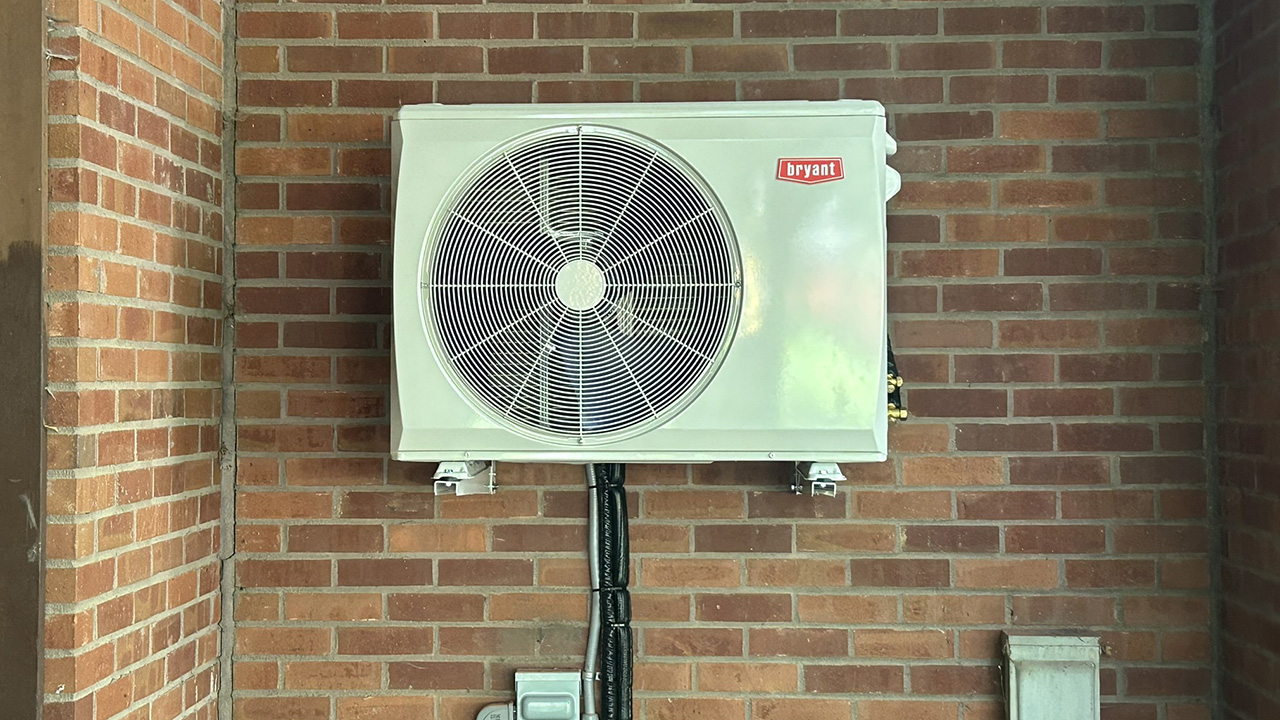
In June 2024, the Clean Heat Minnesota coalition released a study that outlines the path for Minnesota to decarbonize its buildings in the most feasible, cost-effective, and equitable ways. The analysis, which was completed by Synapse Energy Economics, found that Minnesota is likely to affordably reach our goal of net-zero emissions by 2050 by aggressively adopting heat pumps and planning for a smooth transition.
In particular, the Minnesota Decarbonization Analysis looked at the most feasible ways to reach the state’s climate goals by transitioning buildings off natural gas. Study authors from Synapse Energy Economics modeled energy consumption of space heating, water heating, cooking, and clothes drying in residential and commercial buildings — while also measuring the impacts of changes in energy consumption on Minnesota’s gas and electric systems. In particular, researchers compared the costs and benefits of two bookend pathways to reach decarbonization: one that assumes residential and commercial buildings are fully electrified, and a second scenario that maximizes the use of renewable natural gas (or RNG, which is primarily derived from landfill gas and anaerobic digester gas, and can be blended with natural gas currently in the pipelines). Ultimately, the study authors found that fully electrifying buildings in Minnesota will likely be cheaper and healthier for residents and the climate.
Key Findings from the Minnesota Decarbonization Analysis:
- Costs are likely to be Lower if Minnesota Fully Electrifies Heat: Total costs will likely be lower by about 25 percent, or an estimated $13-$15 billion, by fully electrifying buildings, when considering costs of equipment, fuel supply, the electric sector, and the gas system. Savings are even higher if you factor in the cost of air quality impacts and other environmental externalities, plus the cost of purchasing offsets to reach net zero if RNG is used.
- Aggressive Adoption of Heat Pumps is a Key, Immediate Strategy: Whether the state relies on RNG or not, to achieve Minnesota’s goal of net-zero emissions in 2050, Minnesota needs to aggressively adopt air source heat pumps in our homes and businesses by 2030. This can be done mostly by replacing furnaces with heat pumps at the end of their life. Heat pump sales in Minnesota should reach more than 100,000 per year in 2030 to reach our climate goals.
- Partial Electrification Using RNG is likely to Lead To Higher Emissions: Maximizing the use of RNG as a substitute for fossil gas, and electrifying the remaining heating load, results in 9 percent higher emissions and more than double fuel costs than the full electrification scenario modeled.
- Electrification Leads To Health Cost Savings: Transitioning off natural gas is also likely to lead to substantial health improvements and health cost savings, ranging from at least $14.5 million in cumulative health benefits by 2030 to at least $55.8 million—and possibly as much as $129.5 million—in cumulative health benefits by 2050.
- Need For Utility Planning: Minnesota needs significant utility planning for gas and electric systems no matter what path we choose. A well-managed, intentional transition to clean heat will benefit everyone, including utility companies. If the gas transition is not well-managed, we risk harming those who can least afford high energy bills and are most harmed by climate change.
- Costs and Reliability can be Managed through Key Strategies: Clustered, neighborhood-level electrification will help keep the transition affordable. It may be warranted to allow utilities to use accelerated depreciation to recover the costs of capital investments. Minnesota should assist lower-income residents and renters in adopting clean heat technologies.
- Electricity Demand will Increase Substantially, but the Increase is Manageable: Minnesota must upgrade its electric grids accordingly to accommodate growing system-wide peak demand. We have expanded and upgraded our electrical systems before, and intentional planning will ensure the state is well-positioned to meet growing demands. In the long term, increased electric demand will lead to lower rates.
The goal of the decarbonization analysis is not to be overly prescriptive, rather it’s intended to continue the conversation about Minnesota’s path toward clean heat. Minnesota must act now to change our energy trajectory. The stakes are enormous for our climate, health, and jobs. If we do not act, we’ll miss our climate goals and risk imposing the cost on the least able to afford it.
“This study informs our efforts to co-create an equitable and expeditious path toward bringing Minnesota’s gas system to net zero greenhouse gas emissions,” said Margaret Cherne-Hendrick, PhD, senior lead of innovation and impact at Fresh Energy, who served on the study steering committee. “We hope the Minnesota Decarbonization Analysis adds to the growing conversation about how transitioning off natural gas is feasible, and will improve and strengthen our state.”
For more information, you can access the complete study here and a two-page summary here.
About Clean Heat Minnesota
Clean Heat Minnesota is organizing for a state where everyone can heat their homes and workplaces with reliable energy at consistent, affordable prices – while reducing indoor air pollution and tackling climate change. Coalition members include Comunidades Organizando el Poder y la Acción Latina (COPAL), the Citizens Utility Board of Minnesota (CUB), Fresh Energy, the City of St. Paul, and 40+ additional organizations from across the state. Learn more at cleanheatmn.org.
